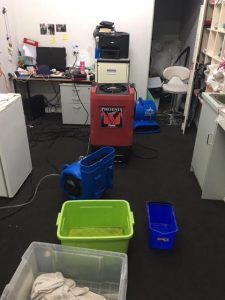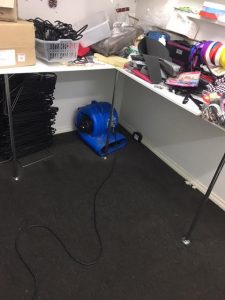Wet Carpet Cleaning, Drying, and Restoration Services Melbourne
When you need your flooded wet carpets to be cleaned, dried and sanitised with precision, look no further than Wet Carpet Cleaners. We are a well-known and reputed company dealing with flood-damaged carpet cleaning and wet carpet drying in Melbourne.
We are equipped with high capacity LGR dehumidifiers and industrial air movers with the high extraction abilities required for drying wet carpets in Melbourne. We are quick in carpet flood cleanup operations and provide emergency carpet drying and water damage restoration in Melbourne.
The longer you keep your carpet wet, the more humid it becomes, making the surroundings moist and damp. Such a condition is perfect for mould spores to grow and spread. The dampness and moist surroundings will increase the health risk as well. It is advisable not to keep your carpet wet for a longer time. If you keep it wet for more duration, there is also a risk of structural damage. Such a situation is supposed to be addressed quickly and effectively. That is where we come in with our emergency wet carpet drying and cleaning team.


Flooded Wet Carpet Restoration Process
The flooded wet carpet drying and cleaning processes are not as simple as it sounds. It is not just a matter of sucking the water, drying the flooded carpet with fans, cleaning it with a steam cleaner and spraying deodoriser on the affected area to remove the bad smell.
The reality is that wet carpet damages itself and the underlay, subfloor and the concrete or wood subfloor underneath it, which also requires attention. If the underlay and subfloor are not appropriately dried, mould and increased odour problems could grow.
We follow the specific procedure for drying wet carpets as mentioned below:
- Arriving at the scene, inspect and assess the extent of the water damage.
- Move furniture and place them on foam blocks, thus avoiding further damage.
- Extract water with powerful industrial vacuum extraction equipment.
- Browning treatment is applied to a carpet to prevent staining.
- Uplift carpet corners to dry the underlays and subfloors.
- Place commercial air movers/dryers and dehumidifiers and leave them on the site until the affected area is completely dried.
- Come back to the premise to check and monitor moisture levels.
- Relay the carpet back when all the structure is dry.
- Steam clean and sanitise the carpets.
- Deodorise on completion of the restoration.
FAQs
How Long Should Carpet Dry?
It’s important to remember that not all carpets are made equally, so drying times will vary from one type of carpeting. However, most types of carpeting should be dry within a day or two of cleaning or a water event. If your carpet is still wet after 48 hours, it’s essential to call a professional immediately to come out and look at your situation.
If you have hardwood flooring under your carpet, it’s also essential to make sure that this flooring is completely dry as well (if it becomes wet). Excess moisture will damage the wood in hardwood flooring, but it can cause mould and other issues that can pose health risks.
Why Should You Dry Carpet Out?
There are many reasons why you might want to dry out your carpet. Maybe you just got done with a deep clean or a flood in your home or office. Whatever the case, you must take the proper drying steps to keep your carpet looking and feeling its best!
It’s essential to dry out your carpet correctly after cleaning, flooding or a leak. Left too long, wet carpet can cause mould and mildew that will make it musty and unhygienic. It can also start to smell bad and even rot the floorboards underneath.
Carpets are made of several layers of material, including a cushioning pad that is often made of foam. Even if some layers can dry faster than others, they can also be more difficult to dry because it takes longer for moisture at the bottom of the pile to evaporate.
How long does it take for mould to grow on wet carpet?
Within 24 and 48 hours of water exposure, the mould and mildew begin to grow. They will continue to grow rapidly if steps aren’t taken to eliminate the water and mould.
Here are a few signs that your carpet could be infested by mould:
- Smell: Musty or sour smell coming from your carpet.
- Colour: Discoloration on the carpet or padding.
- Breathing difficulties: Family members experience allergic symptoms — a person with asthma might be more affected.



